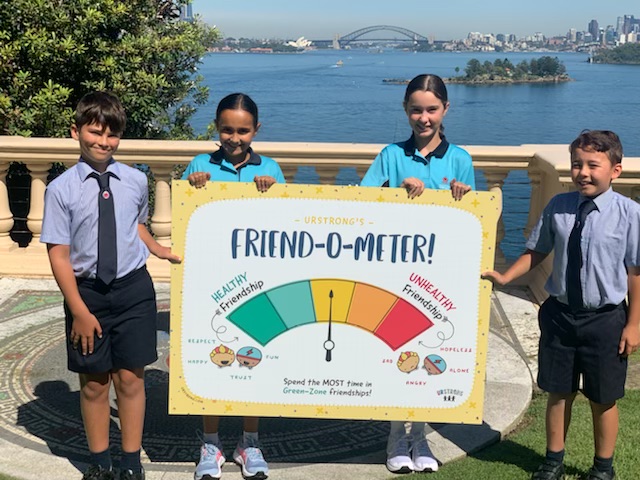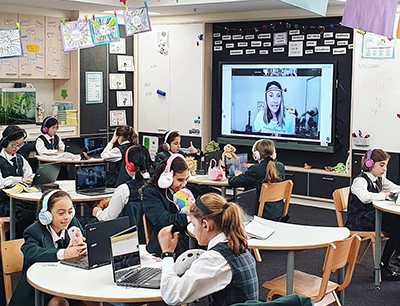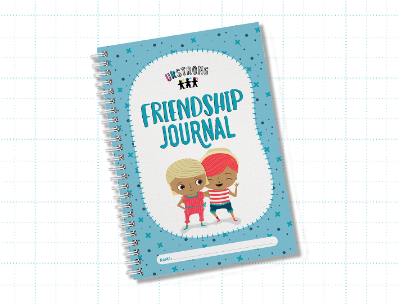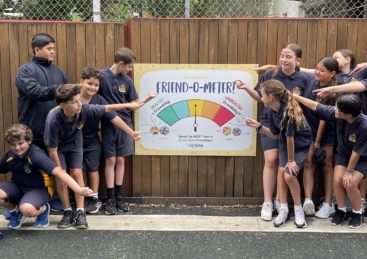Teaching Children to Respect their own Boundaries + Learn How to Use an Exit Strategy
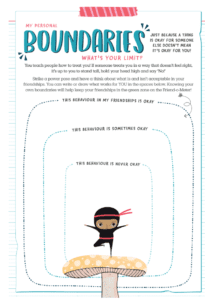
You can learn so much about a child by watching how they behave at recess time. You see some kids who race out to be the first on the field for the soccer game. Some kids quietly wander around the schoolyard, humming and daydreaming their way around. Four Square, handball, and innocent games of tag begin. With a school full of children, each with unique personalities and different views of the world around them, clashes are inevitable. Within minutes of hearing the recess bell, misunderstandings, conflicts, and frustrations emerge and Friendship Fires® ignite.
Within this social environment, there are times a child will end up in a situation that might not sit right with them. Whether the game becomes too rough or kids are cheating, or they’re being interrupted while they try to do something on their own, kids need to recognize when a situation is approaching the wall of their boundaries – their “line”.
We all have a line, a personal boundary, which defines our comfort zone. Our boundaries vary from activity to activity depending on our personality and our familiarity with the activity. For instance, a child who plays competitive hockey or rugby would have a much larger comfort zone for roughhousing than a child who’s never played highly physical sports.
We need to teach children that it’s their responsibility to recognize when they are in a situation that is coming close to their line so that they do not cross it. When a child crosses their line, they’re at-risk of injury, hurt feelings, frustration, or doing something they shouldn’t do.
For example:
You and your buddies start to wrestle, trying out some of the moves you learned in PE. It’s a lot of fun at first and you’re both laughing and enjoying yourself. It’s light-hearted and still within your comfort zone. Your friend is getting really into it, takes you by the shirt and slams you to the ground. It hurts. You can see and feel that this little game of ‘wrestling’ has turned into a ‘who’s the strongest’ competition. You feel the game moving beyond what is comfortable for you and know that, if you continue, you will most likely end up in a situation where you’re hurt, you hurt someone else, and a Friendship Fire® ignites! It won’t end well.
THIS IS THE MOMENT. THIS IS THE LINE. THIS IS YOUR BOUNDARY.
We need to teach children to (a) recognize that feeling inside when they’re approaching their line, and (b) know how to remove themselves from the situation.
Parents can often see when their child is getting close to crossing the line. Explain how this works to your child and tell them that when you see them getting close, you will say, “Careful! Where do you draw the line?”
Help Your Child Craft an EXIT STRATEGY
To remove themselves from the situation, help your child come up with an EXIT STRATEGY – a script that they’re comfortable with and ensure they have it ‘locked in’ and memorized. Your child can say, “I’m gonna step out now and go grab some water!” or “This game is not for me, guys!” or “I’m gonna sit this one out!” or “Too far for me. I’ll catch you guys later!” Practice with your child so they know exactly what to do the next time they’re in this situation where they’re pushing up against their personal boundaries or feeling uncomfortable.
We need to help children take control and ensure they make decisions that reflect who they are and what they’re comfortable with so they’re never in a situation where they’ve crossed the line!
Here’s an activity you can do with your child to help them get clear on their boundaries: Boundary Building. And, if you feel your child can sometimes go too far and react in an explosive way, check this one out: Nip it in the Bud.
Written by Dana Kerford
Friendship Expert & Founder, URSTRONG

